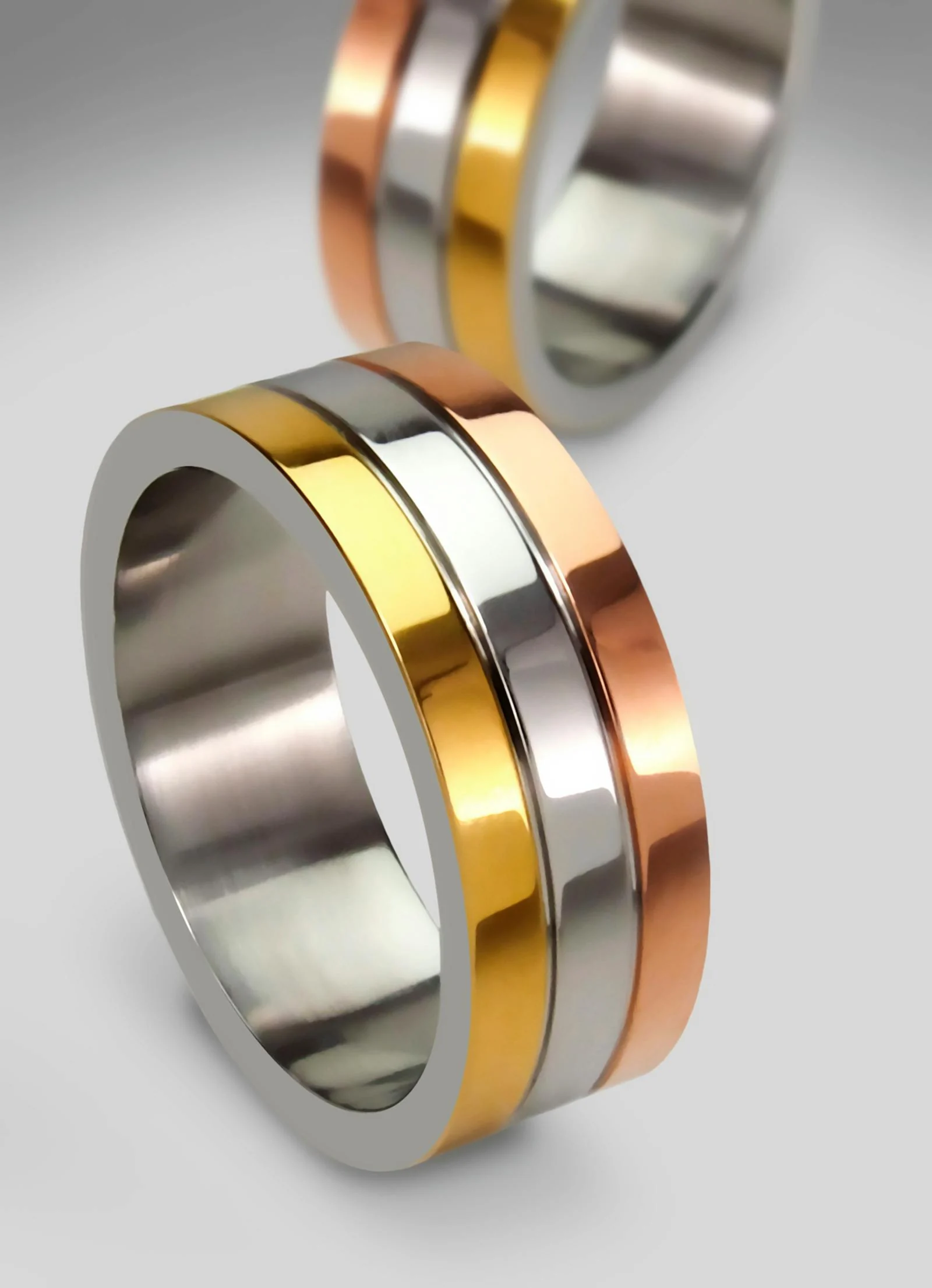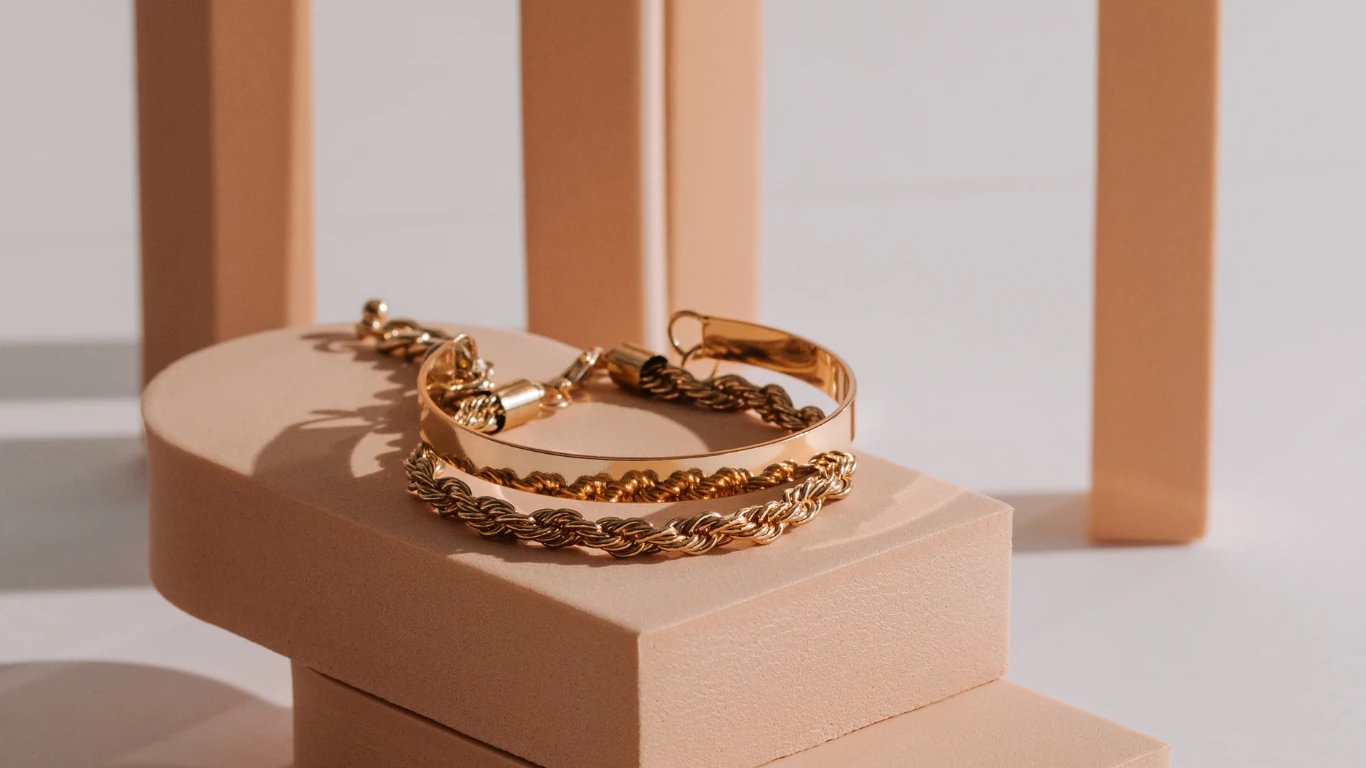In the dazzling world of jewelry and metals, gold and rose gold stand out for their luster and charm, captivating the hearts of many. But what sets these two apart? While both share the word “gold” in their names, they diverge in composition, color, durability, and even symbolism, making each unique in its own right.
The Essence of Gold
Gold, a symbol of wealth and prestige for millennia, stands out in precious metals for its inherent beauty and lasting value. This lustrous metal has captivated human imagination and desire since ancient times, adorning royalty, embellishing sacred objects, and serving as a cornerstone of financial systems.
Gold, a precious metal known for its splendid yellow hue, has been treasured throughout history for its beauty and rarity. Pure gold, or 24 karat (24K), is too soft for everyday jewelry. Thus, it’s alloyed with other metals like silver, copper, nickel, or zinc to enhance its strength and durability. The higher the karat, the purer the gold, with 18K (75% gold) and 14K (about 58% gold) being common in jewelry making. This does not detract from its value but ensures that your gold items can withstand the rigors of daily use.
The features of gold are as rich as its history. Its lustrous yellow color which can range from bright lemony tones to deep, rich hues, depending on the alloys used, is immediately recognizable. Gold doesn’t tarnish, corrode, or rust, making it a perfect symbol of immortality and power in many cultures. Its malleability and ductility allow it to be crafted into virtually any shape, making it a favorite among jewelers and artisans worldwide.
Gold’s value transcends borders and cultures. It’s a universally recognized store of value, often seen as a haven in turbulent economic times. Its appeal lies not just in its aesthetic beauty and its ability to retain value over time, making it a favored investment and a symbol of wealth across generations.
Rose Gold: The Modern Classic
Rose gold, on the other hand, is a more recent invention that has captured the hearts of many with its unique, warm glow. Made by alloying pure gold with copper and sometimes a small amount of silver, rose gold’s signature pinkish hue deepens with the copper content, offering a range of colors from soft pink to deep red. The creation of rose gold is a testament to human creativity in manipulating the properties of metals to achieve new, visually striking results. Many celebrities wear rose-gold engagement rings. This confirms the fact that rose gold is valued no less than yellow.
The allure of rose gold lies in its warmth and versatility. It flatters all skin tones, making it a popular choice for jewelry and decorative items. Unlike its yellow counterpart, rose gold adds a touch of modernity and romance, often associated with love and affection. Its durability is slightly higher than that of yellow gold due to the strength of the copper used in the alloy, making it a practical choice for everyday wear.
Let’s see the main differences between these two gorgeous metals.

Gold vs Rose Gold: Mark the differences
Color and Aesthetic Appeal
The most visible difference between gold and rose gold is their color. Gold’s iconic yellow shine has been a standard of beauty and value for millennia, offering a spectrum of shades from pale to deep yellow based on purity and alloy composition. Rose gold, with its blend of gold and copper, introduces a distinctive pinkish-red hue that ranges from subtle and soft to vibrant, depending on the copper content. This color difference is not just a matter of appearance but also influences the style and design of jewelry, with rose gold often being perceived as more modern and unique.
Historical Significance and Cultural Associations
Gold has a deep-rooted historical significance that spans cultures and epochs, often associated with gods, wealth, and high status. It has been used in currency, art, and jewelry across civilizations, symbolizing permanence and purity. Rose gold, however, lacks the ancient pedigree of gold. It carved out its niche in the 19th century and surged in popularity in the 21st century, often associated with romance, tenderness, and avant-garde fashion. Its relatively recent history gives it a contemporary edge that appeals to those looking for an alternative to traditional metal choices.
Durability and Care
While both metals are durable enough for everyday wear, the alloy composition of rose gold, with its significant copper content, generally makes it more durable than yellow gold. Copper is a sturdy metal, which lends rose gold a higher resistance to scratches and dents. However, this doesn’t mean rose gold is indestructible; proper care is essential to maintain its luster. Gold, particularly higher-karat gold, is softer and more prone to scratching. Still, it’s also less likely to tarnish over time compared to rose gold, which can develop a patina due to the copper alloying.
Versatility in Fashion and Design
Gold’s classic yellow hue offers a traditional elegance that pairs well with a wide range of stones and settings, making it a versatile choice for various jewelry designs. It complements both cool and warm tones, allowing for flexibility in fashion choices. Rose gold, with its distinctive pink hue, offers a unique aesthetic that has become a favorite for engagement rings and contemporary jewelry designs. It provides a warm backdrop that particularly enhances the brilliance of diamonds and is often chosen for its ability to stand out as a fashion statement.
Conclusions
In conclusion, the choice of gold vs rose gold is more than a simple preference for color; it’s a decision that encompasses history, durability, style, and personal symbolism. With its timeless allure, gold represents a classic choice that carries the weight of history and tradition. Its enduring value and versatility make it a staple in the world of fine jewelry. Rose gold, on the other hand, offers a unique alternative that combines the timeless beauty of gold with a contemporary twist, thanks to its warm, pinkish hue and modern appeal.
The differences between these two precious metals—ranging from their color, historical significance, and durability to their fashion versatility and price points—highlight the diversity of options available to jewelry lovers and investors alike. Whether you’re drawn to the classic elegance of gold or the romantic warmth of rose gold, each metal brings its unique characteristics to the table, allowing for personal expression through jewelry.

